
Photo looking straight down at brown sabkha surface. Polygonal pattern poorly defined by irregular polygon margins. Foot for scale. Polygons approximately 70cm wide.
The surface of the sabkha supratidal zone is covered in halite polygons. Infrequent rainfall, sometimes less than once per year, pools in the polygon centre where the water dissolves the halite to leave corroded polygon rims. #SabkhaSaturday
09.03.2024 07:59 — 👍 5 🔁 4 💬 0 📌 0

A flat featureless sandy surface at the shoreline. A water filled channel meanders seaward. A few isolated mangrove trees are at the channel margin.
For today’s #SabkhaSaturday offering, we present…
🥁
…. an intertidal creek in the Abu Dhabi Sabkha. These meandering channels are the focal points of flow during the later stages of ebb tides. Thus, transporting significant amounts of sediment seawards.
17.02.2024 08:46 — 👍 9 🔁 6 💬 0 📌 0
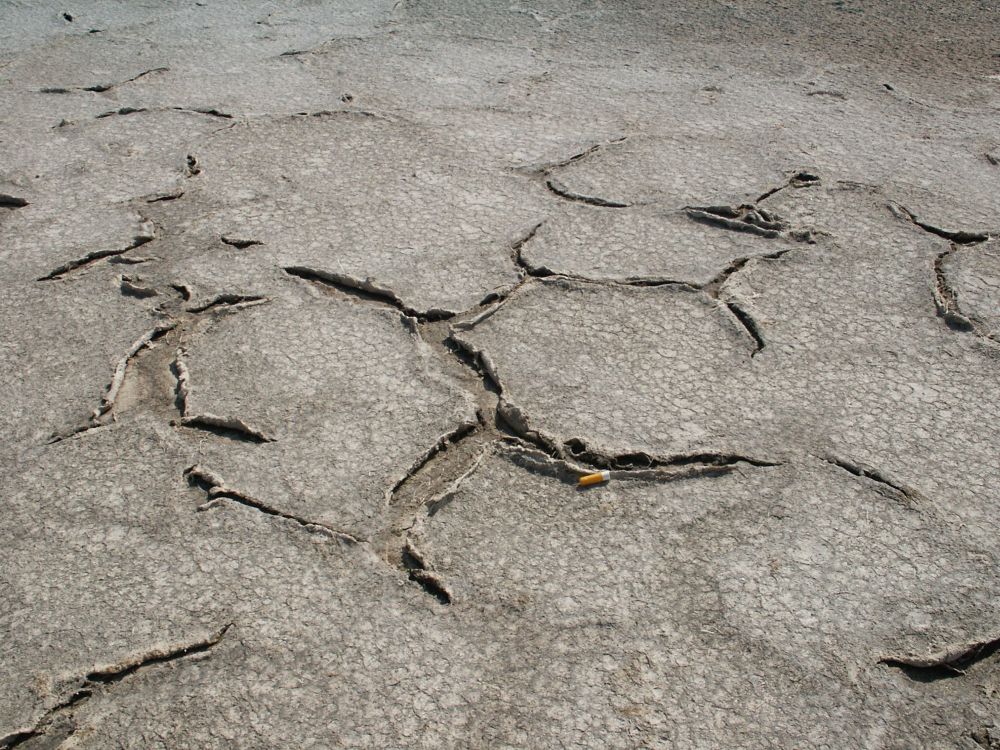
Picture from the Abu Dhabi sabkha showing a flat surface with a poorly developed polygonal pattern. The edges of polygons are curled upward and inward.
Desiccation polygons in thin microbial mats. As mats dehydrate and contract, the edges of polygons roll inwards to produce characteristic open dishes. These edges are particularly susceptible to erosion and transport - acting to ‘seed’ new mats if deposited in a suitable environment. #SabkhaSaturday
10.02.2024 06:22 — 👍 15 🔁 9 💬 1 📌 0
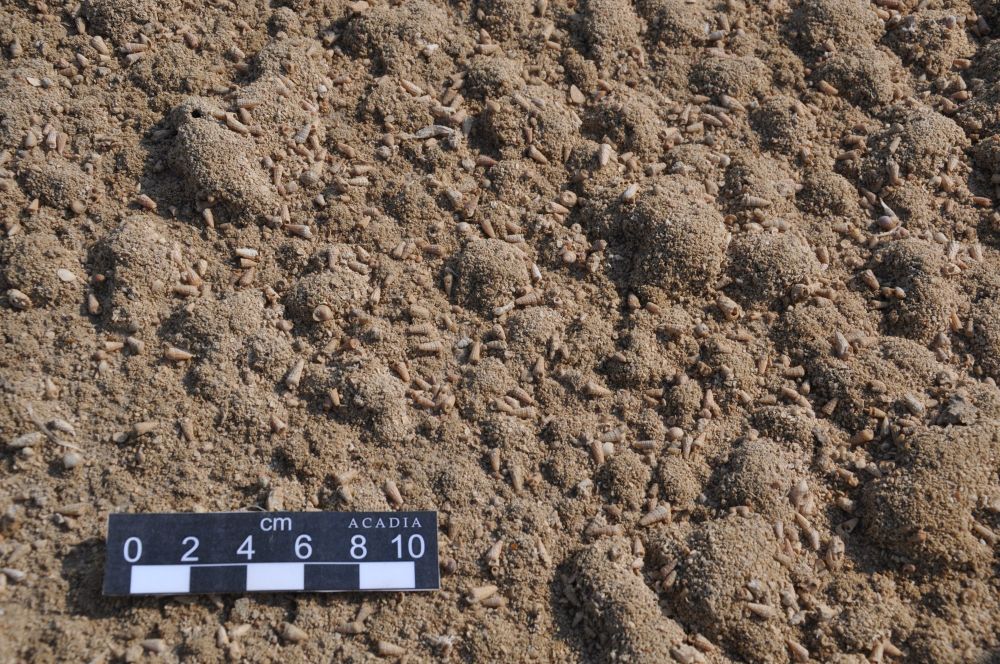
Photo looking down onto the sandy surface in the sabkha. The image shows pustules up to 5 cm in diameter. Gastropod shells are abundant.
Back on the surface of the sabkha this #SabkhaSaturday. The pustular surface seen in this image is caused by the displacive growth of a halite cement between the bioclastic sand grains. This ephemeral cement will be dissolved by rain fall, storm surges or, even, humidity.
04.02.2024 10:20 — 👍 9 🔁 3 💬 0 📌 0
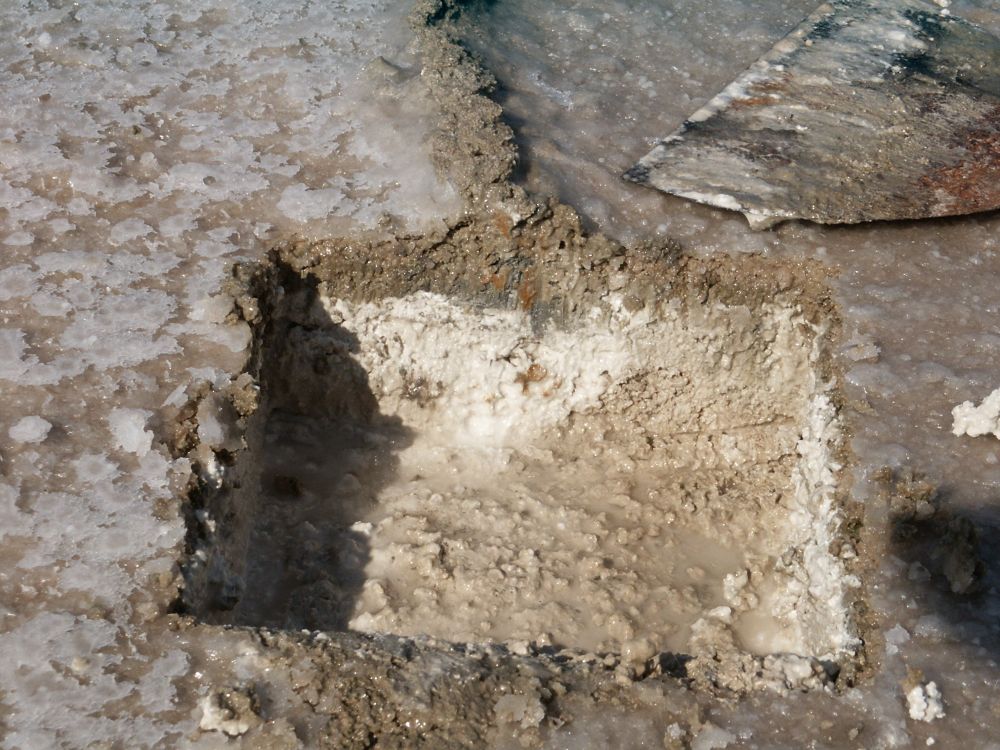
Dig just below the surface of the supratidal zone of the sabkha and you may be lucky enough to find anhydrite. At Earth’s surface, the high temperatures and salinities required to produce this anhydrous form of calcium sulphate are relatively rare,
#SabkhaSaturday
⚒️🧪
27.01.2024 06:46 — 👍 8 🔁 5 💬 0 📌 1
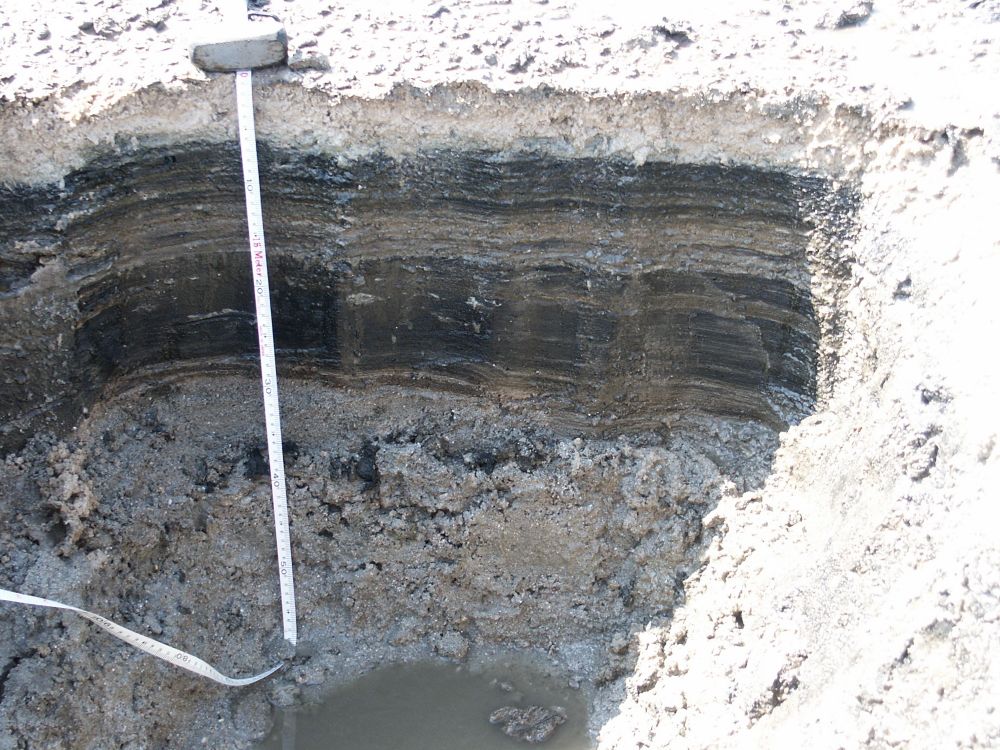
This #SabkhaSaturday it’s time to ‘dig deeper’ into the Abu Dhabi Sabkha. This 60cm deep hole reveals a 25cm thick laminated microbial material buried just 5cm below the surface. The lighter coloured zone in the mats is recording multiple events where lagoons sands were washed onto them.
⚒️
20.01.2024 08:36 — 👍 14 🔁 6 💬 0 📌 0
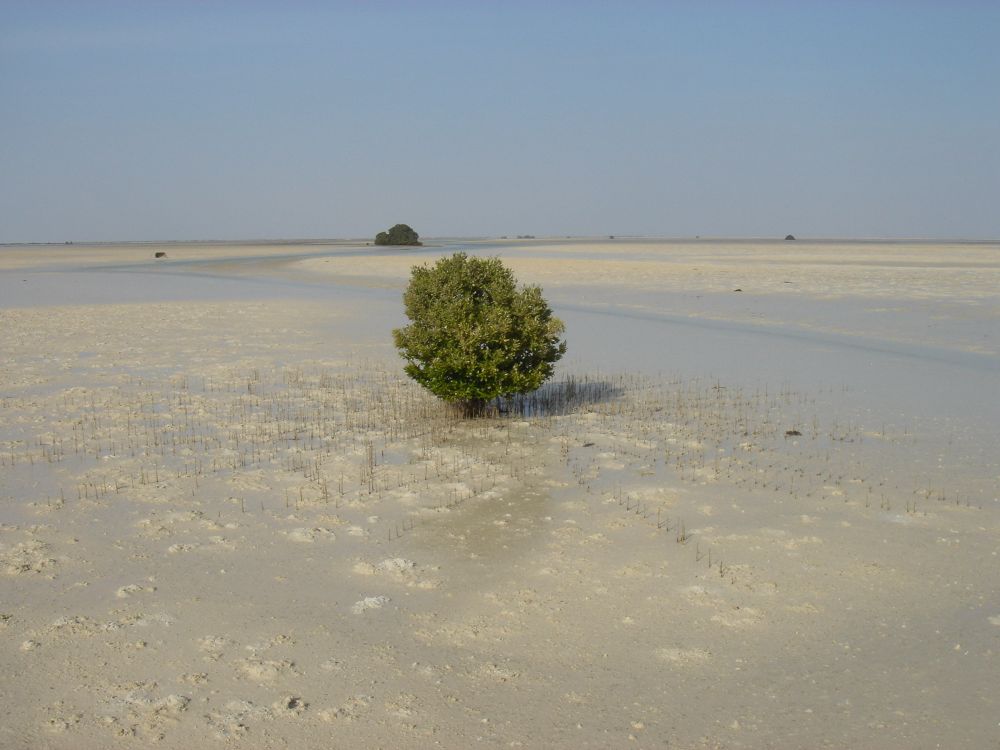
This #SabkhaSaturday finds a mangrove tree (Avicennia marina) growing in the fine sand grade sediments of the intertidal zone of the Abu Dhabi sabkha. Note the aerial roots (pneumatophores) showing the extent of the root network. These facilitate the aeration necessary for root respiration.
13.01.2024 08:09 — 👍 6 🔁 2 💬 0 📌 0
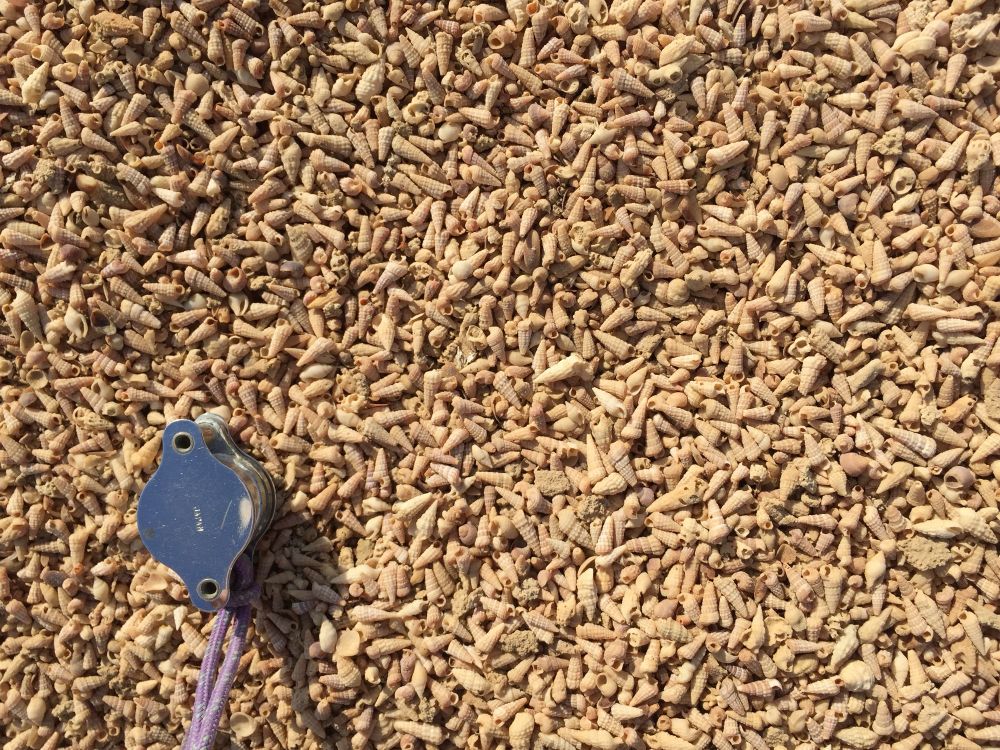
For today’s #SabkhaSaturday, we offer an accumulation of gastropods. Gastropods are abundant in lagoons adjacent to the Abu Dhabi sabkha. Postmortem transport concentrates them into beach ridges and spits. If preserved, these ‘gastropod rudstones’ would confuse palaeoenvironmental interpretation.
⚒️🧪
07.01.2024 08:42 — 👍 8 🔁 4 💬 0 📌 0

For the final #SabkhaSaturday of 2023 we are in the polygonal microbial mats zone of the Abu Dhabi sabkha. The mats develop in the ‘Goldilocks Zone’ at the uppermost intertidal where they are ‘not so wet’ that they can be grazed or ‘so dry’ as they desiccate. ⚒️🧪
30.12.2023 08:00 — 👍 5 🔁 4 💬 0 📌 0
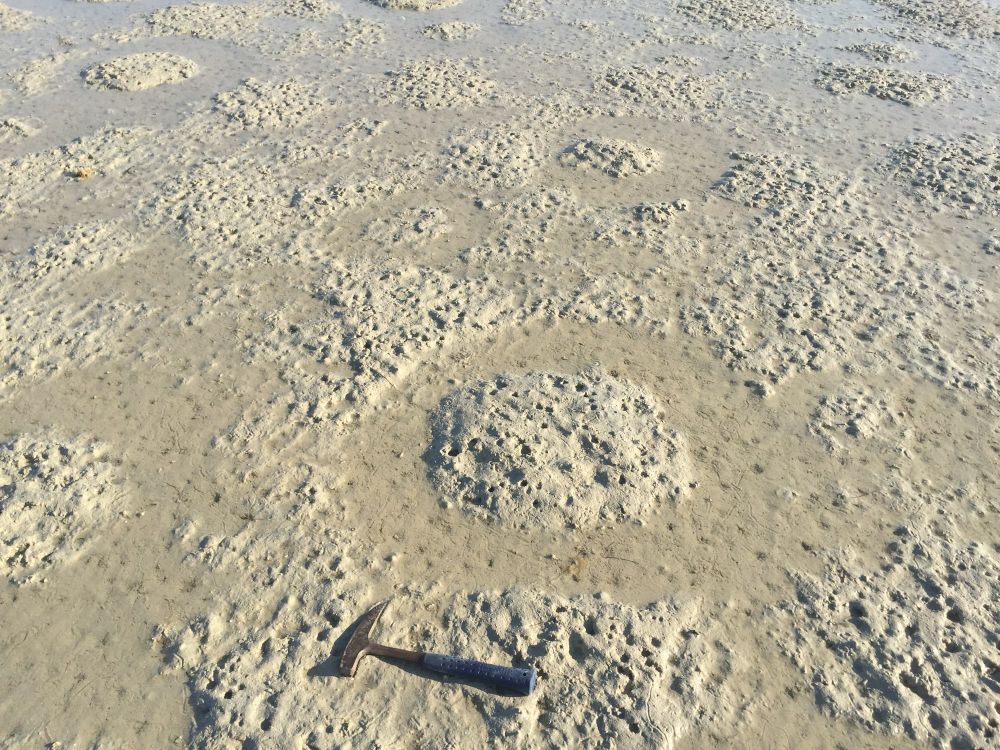
Today’s #SabkaSaturday offering is this distinctive feeding bioturbation trace in the middle intertidal zone of the Abu Dhabi sabkha. This is formed by a Greater Flamingo standing at the centre and rotating on the spot as it feeds🦩⚒️
23.12.2023 12:56 — 👍 31 🔁 12 💬 0 📌 0

Two people standing in a flat landscape with metre scale halite polygons.
For this week’s #SabkhaSaturday, our offering is a rather nice example of metre-scale halite polygons in the supratidal zone of the Abu Dhabi sabkha.
These features form through lateral displacement during halite precipitation.
16.12.2023 04:45 — 👍 10 🔁 7 💬 0 📌 0
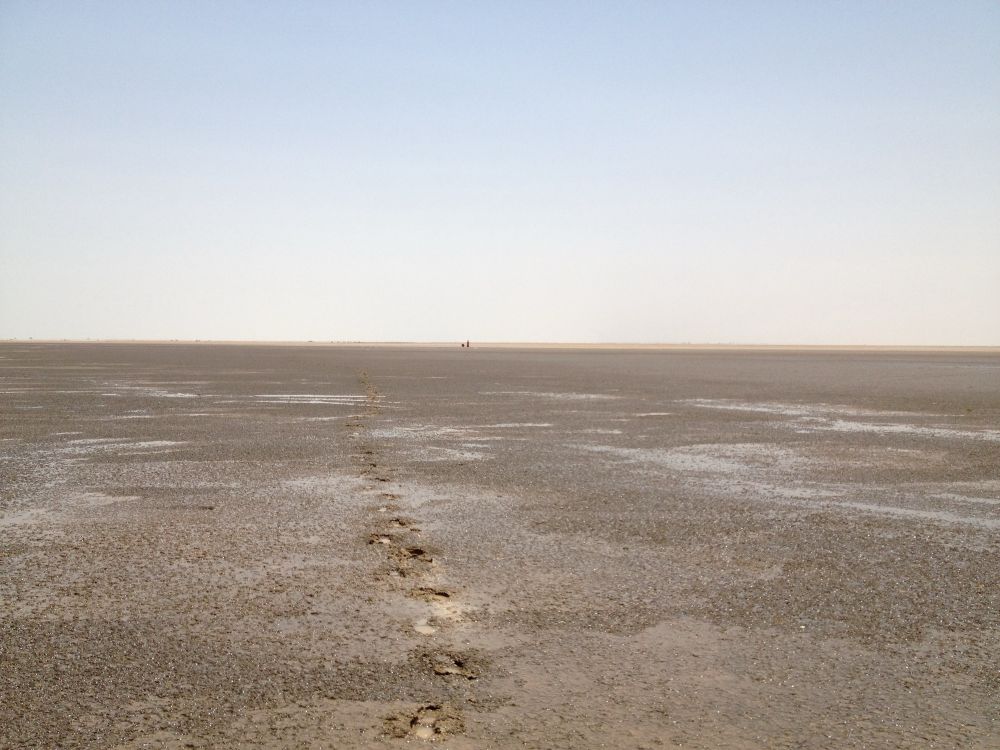
A photo of a very flat landscape with footprints leading off into the distance.
The Abu Dhabi sabkha is flat. Very flat. The average angle of slope seaward is 0.07 degrees. Here, we are in the uppermost intertidal zone looking landward. Note the footprints in the microbial mats at the surface. Two people are in this image for scale (you may need to zoom!).
#SabkhaSaturday
⚒️🧪
09.12.2023 03:58 — 👍 8 🔁 5 💬 1 📌 0
Of course you do, it’s only natural!
09.12.2023 03:41 — 👍 0 🔁 0 💬 0 📌 0

Mud?
Nope!
Our second #SabkhaSaturday sees us wading through the dominantly very-fine to fine grained #carbonate sediments of the intertidal zone in the Abu Dhabi #sabkha. These sediments are anoxic only a few cm below the surface yet are surprisingly heavily bioturbated (not just by us!). 🧪⚒️
02.12.2023 02:46 — 👍 17 🔁 4 💬 0 📌 0

Polygonal growth pattern in microbial mats in the Abu Dhabi Sabkha
Let’s kick off our 1st #SabkhaSaturday with some microbial mats in Abu Dhabi. Microbial mats can develop with a range of morphologies. This polygonal growth pattern, with uplifted margins, is typical of rapid healthy growth in the uppermost intertidal zone.
Explained here: dx.doi.org/10.1002/dep2...
25.11.2023 07:31 — 👍 18 🔁 6 💬 1 📌 1
Home of the International Association of Sedimentologists and the IAS Journals
#sedimentology #sedimentologist
The Geological Society of London is the oldest geological society in the world, and the UK's learned and professional body for Earth & Planetary scientists with ~12,000 members worldwide. www.geolsoc.org.uk
European Geosciences Union is the leading organisation supporting Earth, planetary & space science researchers in Europe. #EGU25 27 April - 2 May 2025. Online Mon-Fri 10-5 CET.
A world-leading independent research organisation providing objective, expert geoscientific data, information and knowledge 🌎
Sedimentologist
Founder and Coordinator of the Seds Online
Vice President of the International Association of Sedimentologists
Earth Sciences are critical to the sustainable future of our planet and society.
Study Earth Sciences at the University of Derby.
Be the solution!
⚒️🌍🧪
https://www.derby.ac.uk/undergraduate/geoscience-courses/earth-sciences-bsc-hons/
The worldwide hub for sedimentologists. An accessible online community for those interested in sedimentology. ⚒️🧪
https://sedsonline.com/
X - @TheSedsOnline
GeoEnergy encompasses all established and developing energy provision technologies and sources that interact with the geological subsurface. The term often also includes geological carbon mitigation strategies such as #CCUS and #CDR.
Geologist interested in the energy transition, bicycling, and public service
https://bio.link/timdemko
https://orcid.org/0000-0002-9125-0907
https://www.semanticscholar.org/author/Timothy-Michael-Demko/15743754
Born in the Anthropocene
Worked at the intersection of Geology and GIS
BS Geology, MS Earth Science
#Geosciences | #EarthScience | #Geology | #GIS | #Rocks | #TeamFluorite | #ScienceFiction | #Fantasy |
#TwitterMigration : @morganssong
Geologist @ University of Derby
Programme lead MSc GeoEnergy; @SedsOnline.bsky.social Founder; AE Sedimentology; EGU_SSP division; geology, earth sciences, sediments, carbonates, evaporites, stratigraphy, paleoenvironments, enhanced weathering, CCS ⚒️🧪🌍
Sedimentologists focusing on shallow-marine to continental transition zones and hyperthermal events, co-founder of @sedimentologika; ski-bum, food and wine enthousiast, special kink for the Permian-Triassic transition. He/him
Virginia Tech Geosciences professor (vtsedsystems.org) ⏐ sedimentology, (paleo)climate, tectonics, sedimentary basins, subsurface geology, geoeducation ⏐ listening and learning
Do what I can to change academia from the inside, earth scientist working on Arctic coastal environmental change and palaeoclimate. HoD and assoc.prof. at Unis- Svalbard. Parent. Equity, diversity and decolonize science. Every day is a new balancing act.
Professor in Physical Oceanography working with tides in the Earth system. Faculty at School of Ocean Sciences, Bangor University. He/him/his.
Environmentalist
Micropalaeontologist
Geologist
Environmental Technician University of Derby
Professor in Sedimentology at MARUM University of Bremen 🇩🇪. Interested in deep-sea sedimentary processes 🌊
Geology professor born at 321 ppm CO2. Sedimentologist and geochemist who studies deep time paleoclimate. #Fulbright Alumna. Opinions are my own.
Earth scientist, educator, communicator
Geography Prof researching past climate, weather extremes, coastal change and cultural heritage. HoD Geography and Earth Sciences, Aberystwyth University. Wales. Dysgu cymraeg.













